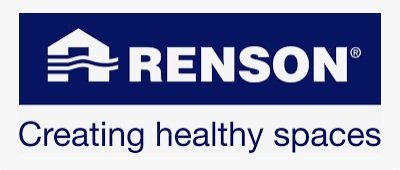Renson’s Successful Entry and Scale in U.S. Building Market
Renson, a family business headquartered in Waregem, Belgium, was founded in 1909 by Polydor Renson to manufacture steel hardware for windows and doors. Polydor’s great-grandson, Paul Renson, has led the company since 1982. During this time, Renson expanded into the design and production of solar shading, ventilation systems, and outdoor living spaces including carports, porches, and pergolas made from lightweight aluminum.
After years of focusing on new product development for European markets, Renson looked to grow through international expansion. It had been selling to a few U.S. architects from its Belgian office, but it realized it needed a U.S. outpost for the world’s largest market. It needed to let U.S. customers know that Renson was committed to doing business here.
In 2012, Paul Renson sent a young business development executive, Gilles Vanpoucke, to build the U.S. business. The first thing Gilles did was to incorporate Renson’s U.S. subsidiary in the state of Delaware, based on the advice of U.S. lawyers. The business entity was quickly set up through a local Certified Public Accountant (CPA), and the CPA’s office was the company’s first U.S. address.
Gilles was tasked with choosing the location for the U.S. business. Since most competitors were on the East Coast, he thought it would be advantageous to set up shop on the West Coast. He focused on California, because of the revenue and growth potential, and he selected Los Angeles for the company’s first U.S. office. Not only was LA close to several big real estate markets that offered attractive housing and cultural options; it was also a major hub for shipping and air travel.
Next, Gilles and the team in Belgium had to choose which of its many products to introduce. Renson couldn’t reconfigure and adjust their entire product line. Technical requirements are different in the U.S., such as the use of 120-volt power lines versus Europe’s 230-volt, and U.S. building permits required different certifications than European ones. Documentation needed to be localized, and price lists needed to be in U.S. dollars. Renson’s team decided to concentrate on their high-end, outdoor living products. These products’ innovative design and detailed construction would differentiate them in the market. Plus, architects, builders, and their wealthy clients were more concerned with quality than price.
Lastly, Gilles had to decide which channels it would sell and distribute its products. The option of building a large salesforce was too expensive and would take too long to establish. Instead, they decided to work with qualified dealers who could provide expert advice, installation, and customer service. Gilles referred to these dealers as partners and “local heroes who really knew the local markets.” In addition, Renson would need a few of their own salespeople to handle the inter-company transactions with their Belgian parent company before selling the Renson products to the dealers. This internal exchange would result in lower import duties for U.S. buyers, too.
“ I’m proud we were able to establish a U.S. business and start producing here within five years. I think the difference is we created a U.S. business rather than being a European export.”
Later Renson created offices in the Northeast, Central U.S., and Florida in addition to Los Angeles to manage the dealers in each region. In 2018, Renson opened a production facility in Dallas, Texas.
Lessons from this case study:
1. Establish a U.S. Business Entity. Renson couldn’t grow its business when it treated the U.S. as an export market. By establishing a U.S. subsidiary, it was able to convince partners and customers alike that it was a serious player in the market.
2. Carefully Select Product Categories. Renson smartly chose the premium outdoor living category where it could be most competitive. It also minimized the cost, complexity, and time to enter the U.S. market by focusing on a limited number of products.
3. Localize Products and Marketing Materials. Renson reconfigured its products and secured certifications to meet U.S. building requirements. It also revised its marketing materials and product documentation to American language and metrics.
4. Select a Beachhead Market. Renson did not have the resources to compete in every U.S. region. It selected the promising West Coast market to enter first. After gaining traction and a solid reputation, it expanded to other regions of the country.
NOTE: This case study was excerpted from Matthew Sawyer’s book: Make It In America - How International Companies and Entrepreneurs Can Successfully Enter and Scale in U.S. Markets, published by Wiley in 2022


